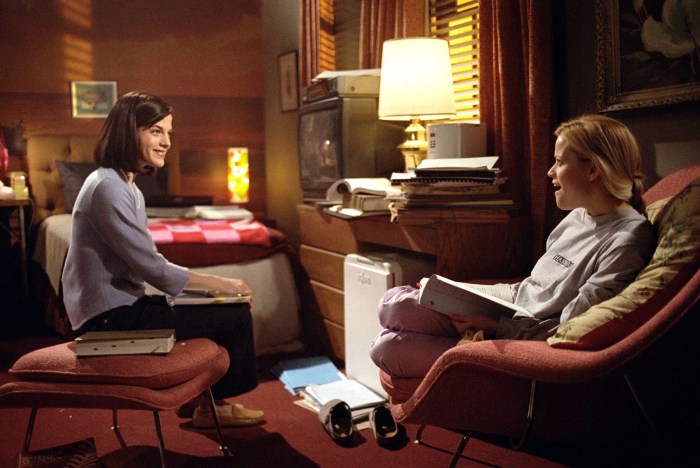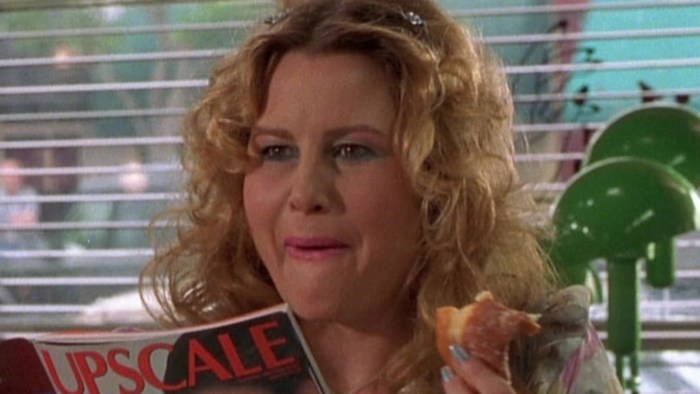The exam in Legally Blonde for short, known as the LSAT, serves as a pivotal moment in the film, driving Elle Woods’ remarkable journey of self-discovery and challenging societal norms.
This examination acts as a catalyst, propelling Elle to confront her preconceived notions and embrace her true potential, while also highlighting the complexities of education and privilege within the legal system.
Legal Significance of the Exam in Legally Blonde

The Law School Admission Test (LSAT) is a standardized exam required for admission to most law schools in the United States. In the movie “Legally Blonde,” the LSAT plays a pivotal role in the protagonist Elle Woods’ journey.
The LSAT is a challenging exam that tests critical thinking, reading comprehension, and analytical reasoning skills. Elle Woods, a fashion merchandising major, initially takes the LSAT on a whim to prove her ex-boyfriend wrong. However, she surprisingly scores very high, which opens up the possibility of her attending Harvard Law School.
Overcoming Obstacles
The LSAT serves as a major obstacle for Elle Woods. She faces skepticism and discrimination from others who doubt her abilities due to her appearance and background. However, Elle’s determination to overcome these obstacles and prove herself drives her to study hard and excel on the exam.
Defying Stereotypes
The LSAT also highlights the theme of defying stereotypes. Elle Woods challenges the preconceived notions that fashion-conscious individuals cannot succeed in academia or law. Her success on the exam proves that intelligence and academic ability can come in many different forms.
In conclusion, the LSAT exam in “Legally Blonde” is a significant catalyst for Elle Woods’ journey. It represents a major obstacle that she must overcome, and it also serves as a testament to her ability to defy stereotypes and achieve her goals.
Elle Woods’ Preparation and Strategy
Elle Woods’ unconventional approach to studying for the LSAT reflects her unique personality and determination. Despite being underestimated due to her “blonde” stereotype, Elle’s unwavering self-belief and resourceful nature empower her to overcome challenges and excel academically.
Unconventional Methods
- Self-Created Study Materials:Elle created her own study guides and flashcards, incorporating fashion, pop culture, and personal anecdotes to make the material more engaging and relatable.
- Study Breaks:Recognizing the importance of breaks, Elle incorporated activities like manicures and shopping into her study schedule, finding that they helped her stay focused and motivated.
- Visual Learning:Elle used colorful highlighters, sticky notes, and diagrams to create visual representations of complex legal concepts, making them easier to remember.
Challenges and Determination
Elle faced skepticism and mockery from her peers and even her law school professors due to her unconventional methods. However, her unwavering determination and refusal to conform to societal expectations fueled her to prove her capabilities.
- Overcoming Stereotypes:Elle refused to let the “dumb blonde” stereotype define her, using it as motivation to excel academically and challenge preconceived notions.
- Perseverance in the Face of Adversity:Despite setbacks and criticism, Elle remained persistent in her studies, working tirelessly to master the material and prove her worth.
- Support from Unlikely Sources:Elle found support from her sorority sisters and a few understanding professors who recognized her potential and encouraged her unconventional approach.
The Exam’s Impact on Elle’s Character Development
The exam in Legally Blondeserves as a pivotal moment in Elle Woods’ personal growth and character development. It challenges her assumptions about herself and the world around her, forcing her to confront her own biases and preconceptions.
Throughout the movie, Elle has been underestimated and dismissed due to her stereotypical blonde appearance and interests. However, her preparation for the exam reveals her intelligence, determination, and resilience. By studying hard and proving her capabilities, she earns the respect of her classmates and professors.
Elle’s Transformation
The exam also challenges Elle’s belief that she is only valued for her physical appearance. By succeeding academically, she demonstrates that she is more than just a “dumb blonde.” This realization empowers her and gives her the confidence to pursue her dreams, even in the face of adversity.
For example, after passing the exam, Elle confidently confronts Professor Callahan about his sexist remarks and stands up for herself. She also becomes more assertive in her pursuit of Warner, proving that she is not afraid to go after what she wants.
The Social Commentary on Education and Privilege: Exam In Legally Blonde For Short

Legally Blondecritiques traditional education systems by exposing their biases and limitations. The exam highlights the advantages and disadvantages of privilege, challenging societal expectations and promoting inclusivity.
Critique of Traditional Education Systems, Exam in legally blonde for short
- The exam’s emphasis on memorization and rote learning favors students from privileged backgrounds who have access to quality education and resources.
- The lack of focus on critical thinking and creativity stifles innovation and individuality, disadvantaging students from underrepresented groups.
Advantages and Disadvantages of Privilege
Elle’s privilege gives her an unfair advantage on the exam, as she has the financial means to hire a tutor and the social connections to gain insider information.
However, the exam also reveals the limitations of privilege. Elle’s reliance on external resources exposes her lack of true understanding of the material, highlighting the importance of merit and hard work.
Challenging Societal Expectations and Promoting Inclusivity
- Elle’s success on the exam defies societal expectations that blonde women are not intelligent.
- Her collaboration with Paulette, a working-class woman of color, emphasizes the value of inclusivity and diversity in education.
Visual Elements and Cinematography
The exam scene in Legally Blonde is visually striking, employing a range of cinematic techniques to convey the significance of the moment and enhance its emotional impact. The use of color, lighting, and camera angles plays a crucial role in creating a visually engaging and emotionally resonant scene.
Color
Color plays a significant role in conveying the emotional tone of the scene. The dominant color palette is warm and inviting, with hues of pink, yellow, and orange used to create a sense of optimism and excitement. However, as the exam progresses, the colors become cooler and more subdued, reflecting the growing tension and uncertainty.
Lighting
Lighting is used to create a sense of drama and suspense. The initial shots of Elle are bathed in soft, flattering light, emphasizing her confidence and determination. As the exam becomes more challenging, the lighting becomes harsher and more angular, creating a sense of unease and discomfort.
Camera Angles
Camera angles are used to convey Elle’s emotional state and her relationship to the exam. In the beginning, the camera is positioned at Elle’s eye level, creating a sense of intimacy and connection. As the exam progresses, the camera often takes on a higher angle, looking down on Elle, which emphasizes her vulnerability and the overwhelming nature of the challenge.
| Visual Element | Symbolic Meaning |
|---|---|
| Warm colors | Optimism, excitement |
| Cool colors | Tension, uncertainty |
| Soft lighting | Confidence, determination |
| Harsh lighting | Unease, discomfort |
| Eye-level camera | Intimacy, connection |
| High-angle camera | Vulnerability, overwhelming challenge |
Questions Often Asked
What is the significance of the LSAT exam in Legally Blonde?
The LSAT exam serves as a catalyst for Elle Woods’ journey, challenging her assumptions, forcing her to confront her own biases, and ultimately leading to her personal growth and transformation.
How does the film critique traditional education systems?
The film highlights the advantages and disadvantages of privilege within the education system, challenging societal expectations and promoting inclusivity.
What are the key visual elements used to convey the significance of the exam?
Color, lighting, and camera angles are used to enhance the emotional impact of the exam scene, creating a visually striking and memorable experience for viewers.